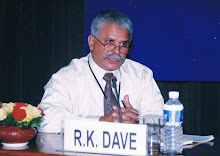SWAN BACKGROUND:
State Wide Area Network (SWAN) has been identified as one of the Mission Mode Projects under the National e-Governance Plan by Department of Information Technology, Govt. of India (DIT, GoI) to increase transparency, efficient and effectiveness for delivery of citizen services.
Under the central guidelines State Wide Area Network (SWAN) is to be designed to works on the PSTN leased circuits for vertical / horizontal connectivity at State HQ, District HQ and Taluka HQ level. DIT, GOI, support will cover the entire cost of establishment, operation and maintenance of the SWAN for a period of five years on 100% grant basis. The State Wide Area Network (SWAN), under the policy announced by Government of India, are implemented on PPP model (BOO, BOOT etc.) by selecting an appropriate agency through a suitable competitive process for outsourcing establishment, operation and maintenance of the Network under appropriate SLA (service Level Agreement).
SLA typically guarantee availability as the percentage of time a circuit or a link is up over a specified time period. If the SLA specifies 99 % uptime averaged over a month, for instance, circuit or link can be down for seven hours before the service provider can be accused of SLA non compliance.
Typically Sate WAN – SLA allows network outages during natural and other disasters. Events of Force Majeure defined in the State Wide Area Network SLA generally include:
(i) Blockade, Revolution, Riot, Bombs, Religious strife or Civil commotion;
(ii) Strikes, lock-outs or other industrial action (other than those involving
primarily Service Provider’s own employees or any of the contractors, sub-contractors, etc. directly associated with the provision of Services under this Agreement)
(iii) Act of war (whether declared or undeclared), terrorist or military action,
politically motivated sabotage;
(iv) A decision or the order of a court or tribunal, which has the effect of
restraining or delaying the provision of Services;
(v) Explosions, accident, breakage of facilities, plant or equipment, structural
collapse, fire chemical or radio active contamination (other than resulting from an act of war, terrorism or sabotage), caused by a person not being the affected Party or one of its contractors or sub-contractors, sub-lessees or any other agencies of the affected Party or any of their respective employees, and not being due to inherent defects of the affected facility of the failure to properly operate the affected facility;
(vi) Fire, lightening, earthquake, tempest, cyclone, hurricane, whirlwind, flood,
landslide or any such natural disaster;
(vii) Epidemic or plague;
(viii) Any event or circumstance of a nature analogous to any of the above or any natural disaster.
The State Wide Area Network design allows service disruptions during above exceptional emergencies or events. Design criteria for disaster response communication network are absolutely different from the criteria adopted for SWAN design as “continuous availability of communication channels” is more crucial during Force Majeure conditions then that of normal or study state situation.
ICT INFRASTRUCTURES FOR EMERGENCY RESPONSE MANAGEMENT:
The basic necessarily for effective functioning of network of EOCs – is the robust and fail safe communication network which can sustain blows of sever incidents and in case of outages can be turned around in bare minimum time. These networks are immune to disasters. In addition – portability should be inherent character of the emergency response communication system. PSTN: The weakness and vulnerabilities of Public switched terrestrial mobile and broad band networks, faced with disaster, have been reveled in natural and man made crises.
PSTN backbones are designed to work under normal circumstances and fails with even minor environmental stress – viz- prolonged power outages, water flooding or fire. SWAN: State WAN works on PSTN backbone and hence are equally vulnerable to sever incidents. SWAN is designed to work during normal conditions and such designs are not resilient to disasters due to economic and other considerations. In addition the existing SWAN design does not offers “assured portability in WAN environment”. These networks can be used for day-to-day operations by the emergency management agencies but can not be relied for their usages during emergency response.
ICT NETWORK FOR DISASTER MANAGEMENT:
State Disaster management agencies, thus, would need to plan, design and establish satellite based WAN meeting - portability, reliability, scalability criteria which are crucial to emergency and disaster response management. Both – existing state wide area networks and the satellite based state emergency response communication network would be cascaded bringing synergies into system.
Development of State Network of Emergency Operation Center (EOCs) is mandated under national disaster Response guidelines - Incident Response system notified by National Disaster Management Authority in July 2010. State EOC is a secured physical facility to accommodate all line departments with specific role during emergencies, with fail safe local and wide area communication connectivity, impact analysis and decision support system. EOC’s are off-site facilities for situation assessment /analysis coordination and collaboration of resources in most effective and efficient possible and are to be connected with both existing SWAN and the Satellite based emergency response communication network. Emerging composition of EOC’s also integrates - Intelligent decision support system (DSS) – viz- Incident Management Application, simulation models into overall disaster management ICT infrastructure design.
Tuesday, August 16, 2011
Subscribe to:
Posts (Atom)


